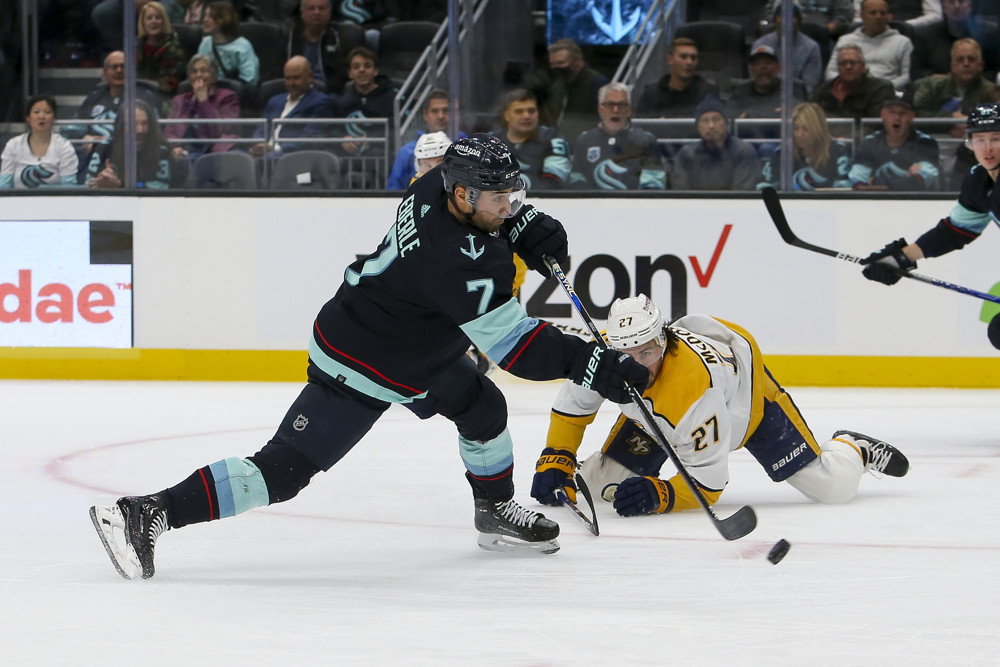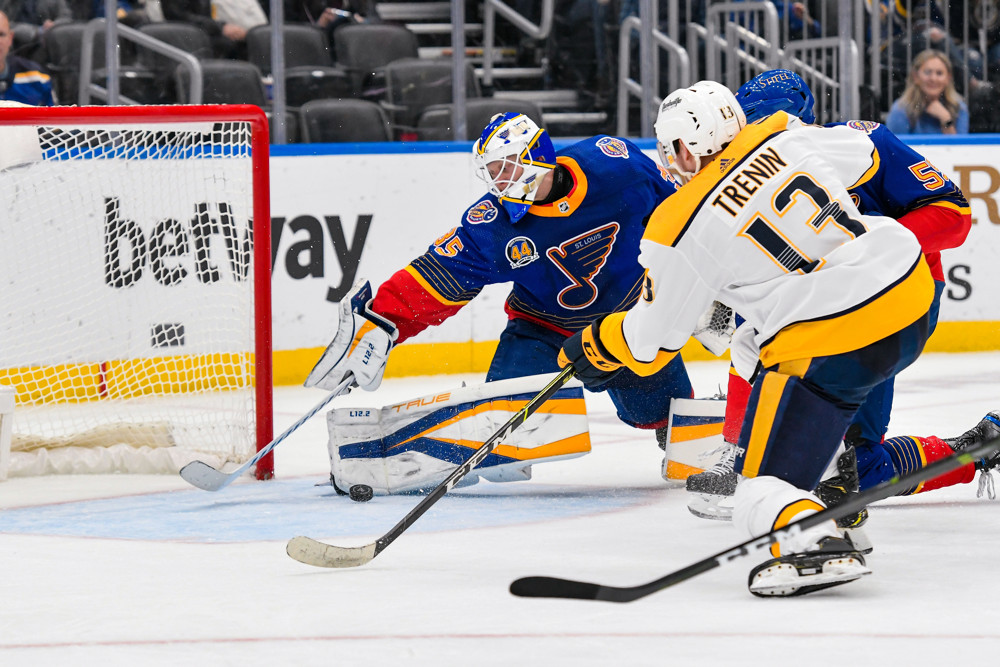Let’s talk context, folks
The major challenge of any statistical analysis is generating something that really tells the whole story. Especially in applications like sports, the goal is often to optimize whatever system you are analyzing. In hockey, this skill is immensely valuable, which is demonstrated by the sudden disappearances of so many amateur data nerds. More often than not, they’re being quietly scooped up by a pro team to provide professional insight.
As we discussed in our last piece, metrics like Corsi and Fenwick are plenty useful for getting a general understanding of possession, but severely lack the context necessary to make informed decisions. The primary context is based on player usage. Two forwards can technically play the same position, but be used in completely different ways in-game. How they are used is based primarily on their individual skillset and which lines are succeeding in each capacity at that moment.
Zone Starts
The most basic way to measure a player’s usage is zone starts. Contrary to the Corsi and Fenwick nonsense, at least this metric has an intuitive name. As said name suggests, this is a measure of how frequently a given player starts in each zone on the ice. To break it down even further, take a look at how it’s calculated:
In this case, we’re calculating the offensive zone start percentage (oZS%). To do this, we need the number of offensive zone starts (oZS) and defensive zone starts (dZS). To get these numbers, you simply tally every faceoff taken in the offensive and defensive zones, respectively. Aside from that, it’s just a basic proportion.
Usually, it’s safe to assume that a player or line with a relatively high oZS% will produce well offensely. A helpful way to measure this? You guessed it: Corsi and Fenwick. By linking the two together, you can start to piece together a stronger description of a given performance.
For example, consider the following situation:
|
|
Corsi | Fenwick |
|
First Line |
60% |
55% |
| Second Line | 50% |
45% |
If this is all the information you’re getting, you would say that the first line played much better than the second line. From there, the logical decision would be to deploy the first line more often, in order to maintain the relatively high possession.
Obviously, though, there is more to a hockey game than those numbers. Using the same example, let’s say that the first line had a 75% offensive zone start percentage, while the second line had a 35%. With those considerably different values, the difference in shot attempts is expected. The first line is being heavily “sheltered” (given a very easy zone deployment), and is required to do less work defensively. The opposite is true, of course, for the second line.
In fact, let’s take a look at how Fenwick changes in relation to zone starts for last year’s Nashville Predators (find an interactive version of this graphic here):
The inevitable limitations
Here’s the thing: not many people love to use zone starts anymore.
For one, it only takes into account shifts that start with a faceoff. In reality, this might ignore over half of the total shifts taken by a player or line. By ignoring so many shifts, it’s easy to lose focus on what is actually happening on a game-by-game basis. Essentially, it requires a very large sample size before it becomes a reliable tool.
Don’t get me wrong, zone starts can tell us quite a bit, but it’s a little outdated and not as effective at identifying in-game trends. It’s quickly going the way of the dodo as more comprehensive and in-depth models are being refined.
Zone Starts are a fun reminder to those in the analytics community that we can be wrong or trust too much in a certain stat. I, especially, was a big believer in zone starts as a dependable measure. However, with all of the new information and tools being developed, I understand that the community is moving in a more comprehensive direction.
 Let’s (zone) start with the Predators
Let’s (zone) start with the Predators
Peter Laviolette is a gambling man. Often, he likes to go all in on his most attacking forwards. His top six forwards get a healthy deployment in the offensive zone, while the bottom six are left cleaning up the mess.
It’s a simple wager: he’s betting that his top two lines can produce more goals than his bottom two lines allow. Certainly, it doesn’t always go well, and often forces younger players into heavily defensive roles. Luckily for him, Nashville’s top six is good enough to make it effective.
Kyle Turris was the biggest beneficiary of Laviolette’s policy last season, as he started 66.80% of his shifts in the offensive zone. Meanwhile, Miikka Salomaki and Austin Watson were regularly thrown to the wolves as they started in the defensive zone almost 70% of the time.
The defense saw a similar trend to the forward group. In this case, P.K. Subban, Mattias Ekholm, and Alexei Emelin were given few offensive zone starts so that Roman Josi and Ryan Ellis could produce points. The Subban/Ekholm pairing saw about 46% of their faceoffs in the offensive zone, while the Ellis/Josi pairing started in the offensive zone over 56% of the time.
 While these two lines performed quite well in their assigned roles, the third pairing proved to be a woeful Achilles’ heel. A good example comes from Alexei Emelin and Yannick Weber, who put up dismal possession numbers despite receiving 55% offensive zone starts.
While these two lines performed quite well in their assigned roles, the third pairing proved to be a woeful Achilles’ heel. A good example comes from Alexei Emelin and Yannick Weber, who put up dismal possession numbers despite receiving 55% offensive zone starts.
George and Michael are always open to questions, comments, and being pelted by soft objects. Feel free to reach out to them on Twitter (@GeorgeM1019 and @WadeM117), or to Penalty Box Radio on Twitter and Facebook.
















